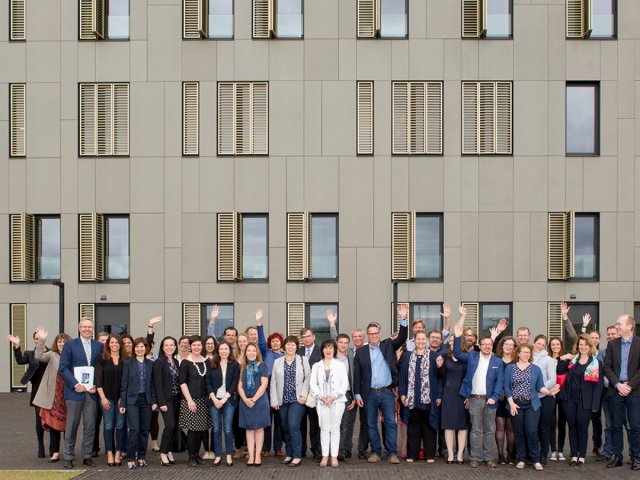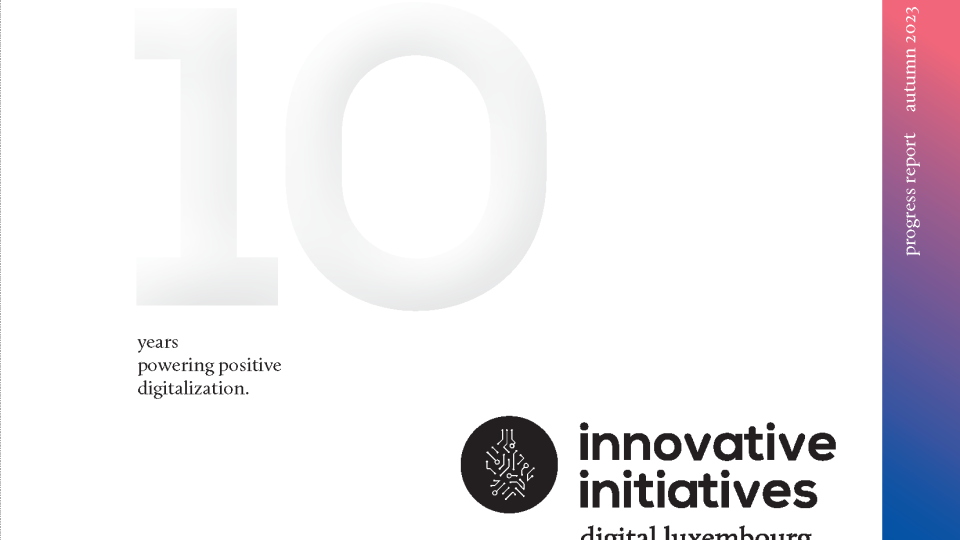As the integration process gets under way, CVCE founder Marianne Backes looks back at the early days of digital humanities in Luxembourg and the building of the digital research infrastructure on European integration.
Professor Romain Martin, Vice-President of the University of Luxembourg, has been tasked with transferring the CVCE’s research projects and activities to the University. To this end, he has been appointed to direct the temporary research infrastructure Digital European Integration Studies (DEIS). He looks at the prospects for future developments. We find out more.
Where did the idea of associating humanities with innovative technologies first come from?
The idea of associating European studies with digital technologies goes back to the 1990s, the era of CD-ROMs and multimedia. Nobody was talking about the Internet, especially not in the humanities and social sciences. I soon became aware of the potential of these new technologies for teaching and research. The first step – always adapting to emerging technologies – involved developing digital collections on the European integration process to provide access to contextualised primary and secondary research material. With the development of digital humanities, these ePublications served as the basis for further computational processes and analyses, including the creation of new tools for working with research material (the ‘Digital Toolbox’). The ultimate aim at each stage has always been to advance knowledge in European studies and to transfer this knowledge to the research community and the general public across the world.
What are the main achievements of the CVCE?
Innovation and sustainability were the main pillars underlying the CVCE’s work. The major achievement clearly is the development of the digital research infrastructure on European integration with the mission to contribute to an enriched understanding of European integration in its past, present and future dimensions. The research infrastructure includes publications, data, tools, services, skills and networks. It supports ICT-based methods and tools for analysis, data visualisation and representation. It provides access to enhanced publications on key subjects relating to the European integration process and incorporating relevant source material in a variety of media formats, in several languages and with diverse geographical, cultural and political origins.
More than half a million users each year now rely on the research infrastructure for their research, teaching and lifelong learning activities. The methodological approach is also widely recognised: an integrated, cross-disciplinary approach enabling humanities scholars to work with technology specialists and for researchers to work with practitioners and citizens.
What are the challenges facing DEIS?
The integration of a smaller institution into a bigger structure is always a challenge, because the process should guarantee the preservation of the assets that have been built up over decades, while at the same time creating new opportunities and prospects. Due to the good collaboration of both institutions, the integration process of the CVCE was a success and strengthens the University’s expertise in European studies and digital humanities.
Will there be a link between the projects carried out by the DEIS unit and the IHTP? How does the University’s digital strategy fit in?
Yes, I am sure that the integration of existing projects will be an important element in the future success of the IHTP. But beyond the focus on European integration studies, the new research infrastructure also encompasses professional media production methodologies and a variety of innovative and state-of-the-art tools for digital humanities. Both of these aspects will play an important role in the University’s future digital strategy.
What will happen to the CVCE.eu research infrastructure?
Over the past 20 years, the highly motivated CVCE team has acquired a unique combination of skills and expertise in the field of European integration studies and digital humanities. I’m very proud of these achievements and I’m confident that within the next few years the digital research infrastructure on European integration will have progressed within the framework of the University, with the addition of new ePublications in the area of European studies and further innovative tools for research and transfer activities.
Romain Martin: This infrastructure will play a major role in the field of digital history research, but for the University it will also be an important window to the outside world, as its content is of high relevance for secondary school pupils and University students. There is already a large community of users from all over the world and the aim is to continue developing this community, while at the same time playing a more active role and contributing to the research infrastructure.







